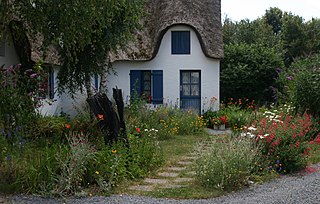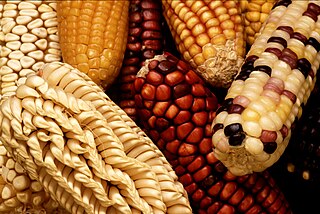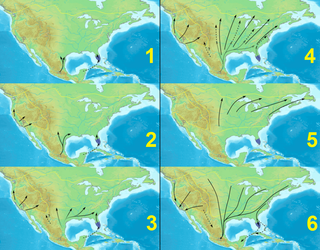Related Research Articles

A pollinator is an animal that moves pollen from the male anther of a flower to the female stigma of a flower. This helps to bring about fertilization of the ovules in the flower by the male gametes from the pollen grains.

A wildlife garden is an environment created with the purpose to serve as a sustainable haven for surrounding wildlife. Wildlife gardens contain a variety of habitats that cater to native and local plants, birds, amphibians, reptiles, insects, mammals and so on, and are meant to sustain locally native flora and fauna. Other names this type of gardening goes by can vary, prominent ones being habitat, ecology, and conservation gardening.

Habitat conservation is a management practice that seeks to conserve, protect and restore habitats and prevent species extinction, fragmentation or reduction in range. It is a priority of many groups that cannot be easily characterized in terms of any one ideology.

Pollinator decline is the reduction in abundance of insect and other animal pollinators in many ecosystems worldwide that began being recorded at the end of the 20th century. Multiple lines of evidence exist for the reduction of wild pollinator populations at the regional level, especially within Europe and North America. Similar findings from studies in South America, China and Japan make it reasonable to suggest that declines are occurring around the globe. The majority of studies focus on bees, particularly honeybee and bumblebee species, with a smaller number involving hoverflies and lepidopterans.
Natural Resources Conservation Service (NRCS), formerly known as the Soil Conservation Service (SCS), is an agency of the United States Department of Agriculture (USDA) that provides technical assistance to farmers and other private landowners and managers.

The Xerces Society for Invertebrate Conservation is a non-profit environmental organization that focuses on the conservation of invertebrates considered to be essential to biological diversity and ecosystem health. It is named in honor of an extinct California butterfly, the Xerces blue.

Agricultural biodiversity or agrobiodiversity is a subset of general biodiversity pertaining to agriculture. It can be defined as "the variety and variability of animals, plants and micro-organisms at the genetic, species and ecosystem levels that sustain the ecosystem structures, functions and processes in and around production systems, and that provide food and non-food agricultural products.” It is managed by farmers, pastoralists, fishers and forest dwellers, agrobiodiversity provides stability, adaptability and resilience and constitutes a key element of the livelihood strategies of rural communities throughout the world. Agrobiodiversity is central to sustainable food systems and sustainable diets. The use of agricultural biodiversity can contribute to food security, nutrition security, and livelihood security, and it is critical for climate adaptation and climate mitigation.

Wildlife conservation refers to the practice of protecting wild species and their habitats in order to maintain healthy wildlife species or populations and to restore, protect or enhance natural ecosystems. Major threats to wildlife include habitat destruction, degradation, fragmentation, overexploitation, poaching, pollution, climate change, and the illegal wildlife trade. The IUCN estimates that 42,100 species of the ones assessed are at risk for extinction. Expanding to all existing species, a 2019 UN report on biodiversity put this estimate even higher at a million species. It is also being acknowledged that an increasing number of ecosystems on Earth containing endangered species are disappearing. To address these issues, there have been both national and international governmental efforts to preserve Earth's wildlife. Prominent conservation agreements include the 1973 Convention on International Trade in Endangered Species of Wild Fauna and Flora (CITES) and the 1992 Convention on Biological Diversity (CBD). There are also numerous nongovernmental organizations (NGO's) dedicated to conservation such as the Nature Conservancy, World Wildlife Fund, and Conservation International.
Gary Paul Nabhan is an agricultural ecologist, Ethnobotanist, Ecumenical Franciscan Brother, and author whose work has focused primarily on the plants and cultures of the desert Southwest. He is considered a pioneer in the local food movement and the heirloom seed saving movement.

A biodiversity action plan (BAP) is an internationally recognized program addressing threatened species and habitats and is designed to protect and restore biological systems. The original impetus for these plans derives from the 1992 Convention on Biological Diversity (CBD). As of 2009, 191 countries have ratified the CBD, but only a fraction of these have developed substantive BAP documents.
The Wild Farm Alliance (WFA) is a non-profit organization dedicated to increasing biodiversity by expanding the idea and practice of wild farming.

A buffer strip is an area of land maintained in permanent vegetation that helps to control air quality, soil quality, and water quality, along with other environmental problems, dealing primarily on land that is used in agriculture. Buffer strips trap sediment, and enhance filtration of nutrients and pesticides by slowing down surface runoff that could enter the local surface waters. The root systems of the planted vegetation in these buffers hold soil particles together which alleviate the soil of wind erosion and stabilize stream banks providing protection against substantial erosion and landslides. Farmers can also use buffer strips to square up existing crop fields to provide safety for equipment while also farming more efficiently.

Earthwatch Institute is an international environmental charity. It was founded in 1971 as Educational Expeditions International by Bob Citron and Clarence Truesdale. Earthwatch Institute supports Ph.D. researchers internationally and conducts over 100,000 hours of research annually using the Citizen Science methodology. Earthwatch's mission statement states that the organization "connects people with scientists worldwide to conduct environmental research and empowers them with the knowledge they need to conserve the planet." As such, it is one of the global underwriters of scientific field research in climate change, archaeology, paleontology, marine life, biodiversity, ecosystems and wildlife. For over fifty years, Earthwatch has raised funds to recruit individuals, students, teachers, and corporate fellows to participate in field research to understand nature's response to accelerating global change.

Arctomecon humilis is an endangered flowering plant species in the family Papaveraceae. It is endemic to the Dixie Corridor in southwest Utah. A. humilis grows in a very harsh desert environment, requiring a specific soil type. The plant's common name is dwarf bear-poppy, which is indicative of the plant's jagged, three “clawed” leaves. The poppy is a perennial plant, meaning it blooms annually. The dwarf bear-poppy is protected under the Endangered Species Act as of 1979. The plant is threatened by urban development, off-road vehicle use, and mining. Although hard to estimate, its population has diminished significantly over the years. There are several plans to protect the poppy, including making the land it occurs on a protected area.

Conservation programs for the Mississippi River watershed have been designed to protect and preserve it by implementing practices that decrease the harmful effects of development on habitats and to overlook monitoring that helps future planning and management. A main focus is nutrient pollution from agricultural runoff of the nation's soybean, corn and food animal production, and problems relating to sediment and toxins. Conservation programs work with local farmers and producers to decrease excess nutrients because they cause major water quality problems along with hypoxia and loss of habitat. Organizations such as the Mississippi River/Gulf of Mexico Watershed Nutrient Task Force and USDA programs such as the Upper Mississippi River Forestry Partnership and the Mississippi River Basin Healthy Watersheds Initiative contribute to conserving what is left of the Mississippi River watershed.
The Pollinator Partnership or P2 is a 501(c)(3) nonprofit organization with its headquarters in San Francisco, California that works to protect the health of managed and native pollinating animals that are vital to wildland and agricultural ecosystems. The Pollinator Partnership’s mission of environmental stewardship and pollinator protection is achieved through conservation, policy, education, and research. Signature initiatives include the NAPPC, National Pollinator Week, and EcoRegional Planting Guides that allow local citizens to plant gardens that provide habitats for important pollinating species.

Spiranthes diluvialis is a rare species of orchid known as Ute lady's tresses. The species name diluvialis means "of the flood". It is native to the western United States, where there are scattered, mostly small occurrences in the states of Colorado, Idaho, Montana, Nebraska, Nevada, Utah, Washington, and Wyoming. An occurrence was recently discovered in southern British Columbia. The plant faces a number of threats to its existence. It is a federally listed threatened species of the United States.

Monarch butterfly migration is the phenomenon, mainly across North America, where the subspecies Danaus plexippus plexippus migrates each autumn to overwintering sites on the West Coast of California or mountainous sites in Central Mexico. Other populations from around the world perform minor migrations or none at all. This massive movement of butterflies has been recognized as "one of the most spectacular natural phenomena in the world".

A pollinator garden is a type of garden designed with the intent of growing specific nectar and pollen-producing plants, in a way that attracts pollinating insects known as pollinators. Pollinators aid in the production of one out of every three bites of food consumed by humans, and pollinator gardens are a way to offer support for these species. In order for a garden to be considered a pollinator garden, it should provide various nectar producing flowers, shelter or shelter-providing plants for pollinators, and avoid the use of pesticides.
References
- ↑ Sobeich and Savignano, 2000
- ↑ Buchmann and Nabhan, 1996
- ↑ Free, 1970 in Tepedino 1979
- ↑ McGregor, 1976 in Tepedino, 1993
- ↑ Watanabe, 1994
- ↑ Pimental et al., 1992 in Ingram et al., 1996
- ↑ Heithaus, 1974 in Tepedino, 1979
- ↑ Moldenke, 1975 in Tepedino, 1979
- ↑ del Moral and Standley, 1979 in Tepedino, 1979
- ↑ Tepedino, 1979
- ↑ Buchmann and Nabhan, 1966
- ↑ USEPA, 1998
- ↑ Buchhmann and Nabhan, 1996
- ↑ Kevan, 1977 in Allen-Wardell et al., 1998